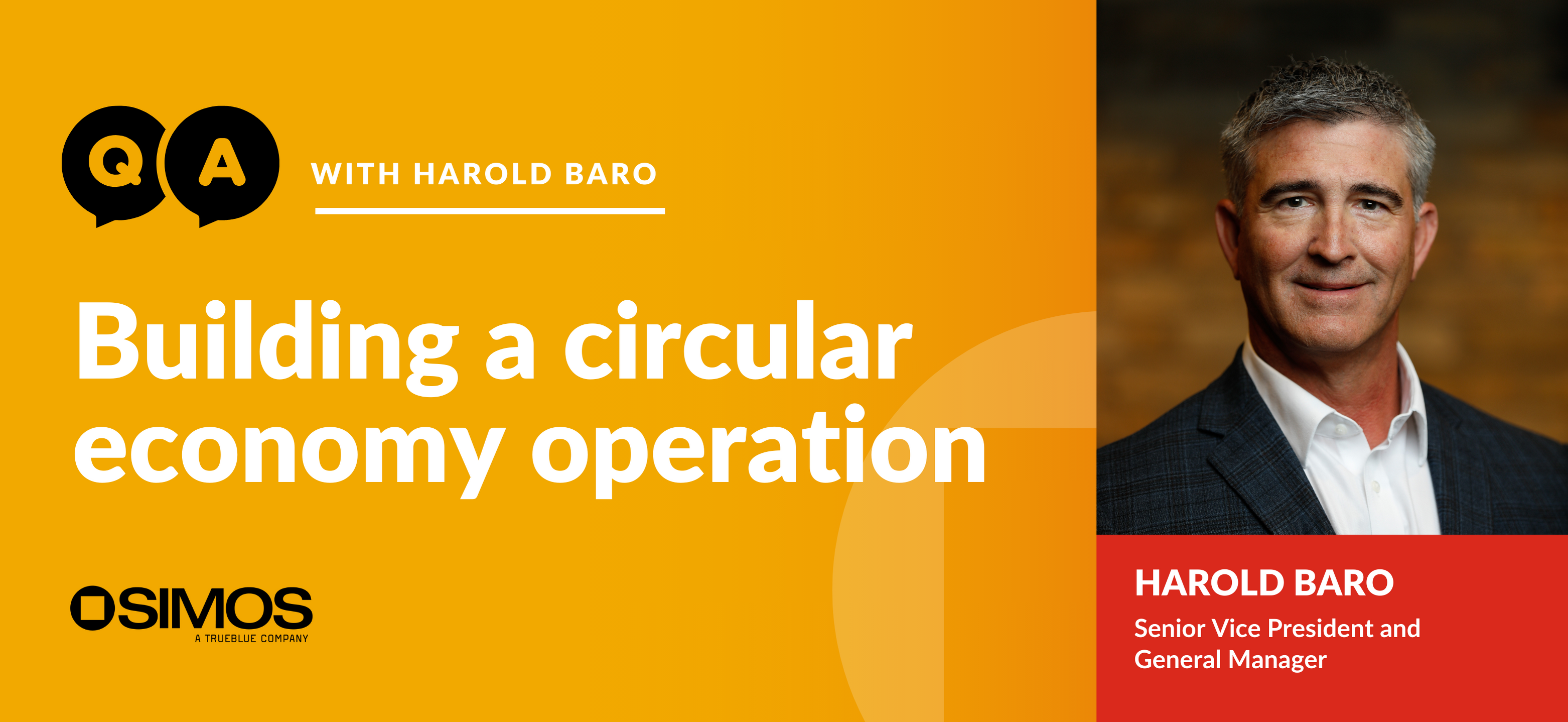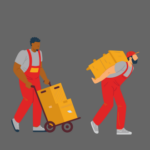
A circular economy is one that helps restore and regenerate resources, using these available resources for as long as possible to reduce and eliminate waste.
We spoke with Harold Baro, SIMOS’s Senior Vice President, to get his expertise on what using a circular economy model looks like for operations and how returns processing plays a critical role.
1. Why should companies care about a circular economy?
The reason operations should care about a circular economy is two-fold.
One reason is a reduction in waste and in turn, cost savings. How can you re-use an item or increase its life cycle within the economy or even within your supply chain. Operations being able to repurpose a product can lead to a cost savings or additional revenue depending. Our economy will benefit from more green initiatives. Another reason is the more obvious environmental reason. The less we send to a landfill or a shredder facility, the better it is for everyone. As a whole, we should try to create items that last longer.
2. How can operations build a more circular operation?
There are a ton of resources out there on this topic and it looks different for each company. Overall, it takes a concerted and international effort to make this change. You are also possibly facing a bit more upfront cost. But in the long-term, you’ll gain more for your bottom line and the economy. Another option is to partner with a company who are experts in this area to ensure you are taking the proper steps. This can help maximize your opportunity to create an effective Reverse logistics operation and lead to happier results and end users.
3. What role do your returns play in becoming more circular?
Returns are the main piece of a circular economy model. This includes everything from the support teams taking calls or providing credit to the customer, receiving the item at a warehouse or processing center, and then determining what direction that item will go. Will a return item be recycled or reused? Will it be put back into inventory to be resold? Returns is part of the decision tree within the circular economy, which determines if it that item continues a usable life or ultimately ends up in a landfill or shred center. An operation with an efficient returns process can provide additional revenue or be an expensive cost center for your company. Making sure it is set up properly can truly impact your bottom line and the sustainability of your process.
4. What strategies can help make returns processing more efficient and sustainable?
A good strategy for returns processing is to make sure you run it like any other part of your business. It shouldn’t be an afterthought. Focus on throughput and having the right amount of labor to do the job efficiently. Study your operation and identify bottlenecks or opportunities to streamline your returns process. It’s best to create a reasonable processing standard and then hold your team accountable to that standard. Another strategy to partner with a company who specialize in an output-based solution and returns processing. This allows you to focus on the incoming product instead of worrying about returns. By leaning on a workforce partner, you can streamline the process with their expertise.
Want to learn more about an efficient returns process? Download our quick guide to returns processing here.



